|
You’ve probably been to at least one of these. A harried photographer scampers everywhere with cameras and flash, attempting to capture every picture the bride and groom (and their families) could possibly want, and trying to tell a story at the same time. Or you’re enjoying(?) the CEO’s speech at the company Christmas party, and a slightly more relaxed photographer tries to capture the CEO, corporate officers, and employees having fun. At any event, people are the story. Telling that visual story well can be a very intense experience. Not surprisingly, the best pictures will come from your favorite events – the ones you’re passionate about. And those super shots will have low-angle light somewhere in the lighting mix, usually as the main light. 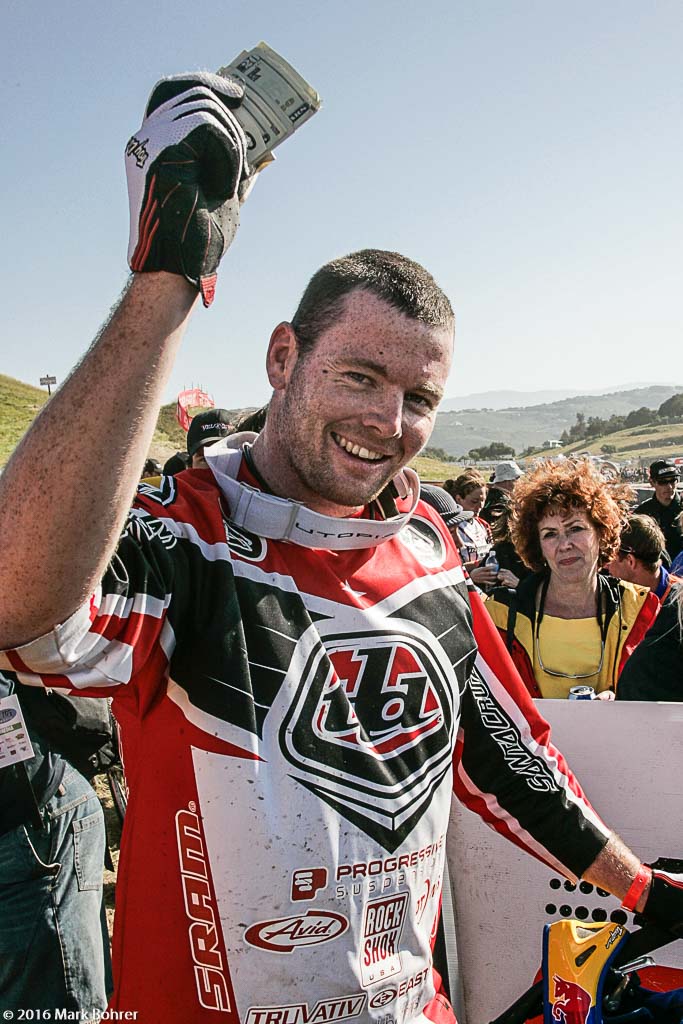 Nathan Rennie celebrates with his dual slalom winnings, 2005 Sea Otter Classic Sports – Pro Mountain Bike Races None of us liked to do them, but after-race and podium shots are a prime place for good live portraits. Australian Nathan Rennie had just won the pro men’s dual slalom race at California’s 2005 Sea Otter Classic, the mountain bike racing season’s April kickoff. Instead of standing on a podium with a trophy, his smile and fistful of cash winnings tell a much better story. Emily Batty had just won her first pro mountain bike race, and her smile says it all. The fans and background bridge over Laguna Seca’s auto race track give a sense of place. I flash-filled her face to avoid shadows. 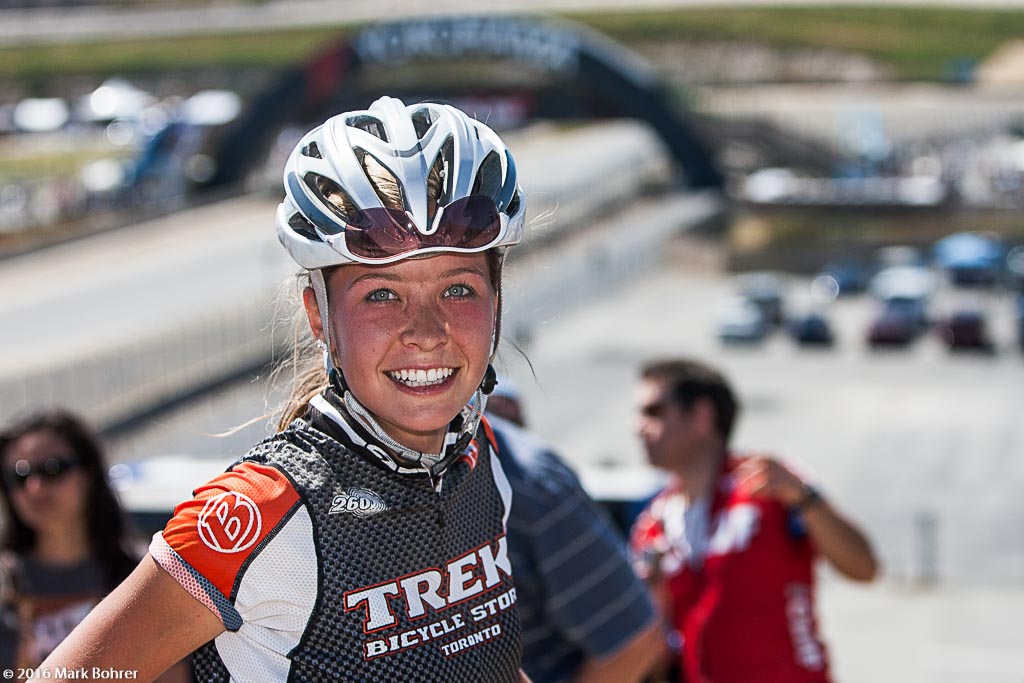 Emily Batty wins Pro Women’s STXC, 2009 Sea Otter Classic, Laguna Seca, California Different Outdoor Light It was mid-afternoon near West Virginia’s New River. We were just finishing a hike in the surrounding green hills when rain began to pelt down. Fortunately, the dining fly was up and provided shelter as Roberta and Annie waited out the storm. The fly itself chopped down and diffused the cloudy overhead sunlight. I used on-camera flash as my main light. You can sometimes get away with this, but today I use a Lumiquest flash diffuser to soften the light a little. 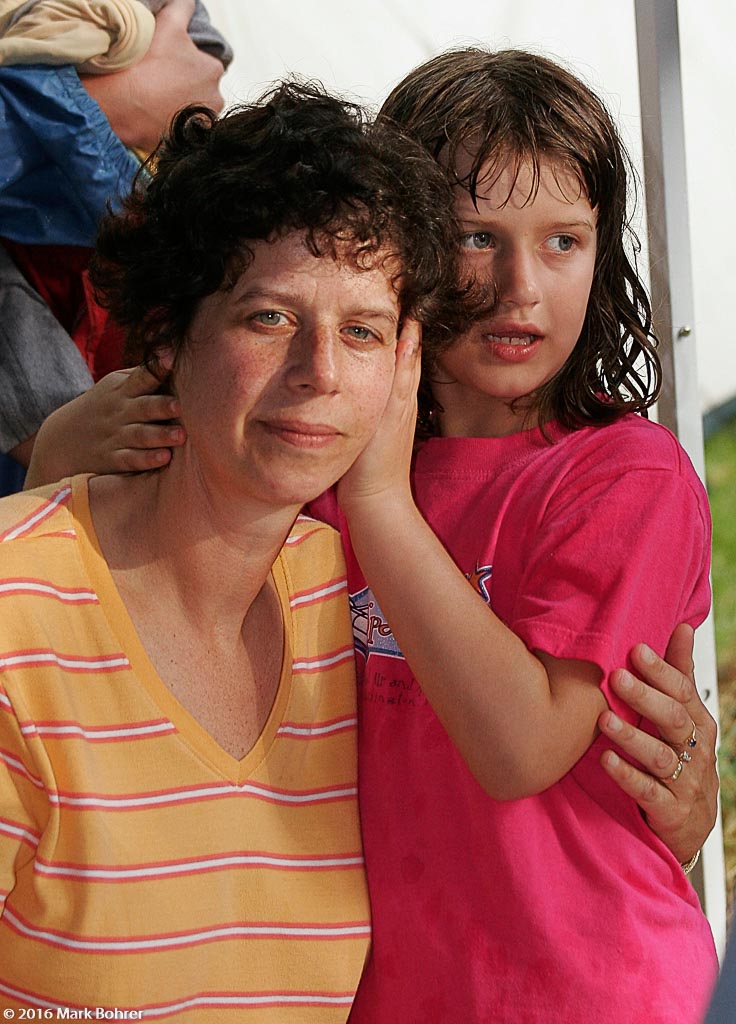 Roberta and Annie wait out the rain near Hico, WV Later that night, Rick provided accompaniment for some original entertainment by firelight. I used a tripod to steady the long exposure, waiting for Rick’s intent expression as he got into it. His face and eyes are sharp, and the blurred hands are normal action for a guitarist. I wish the lantern had been placed a little differently, but it created the main light on his face. I couldn’t move it without disturbing the scene. I can live with the hot highlight – the picture still tells the story. 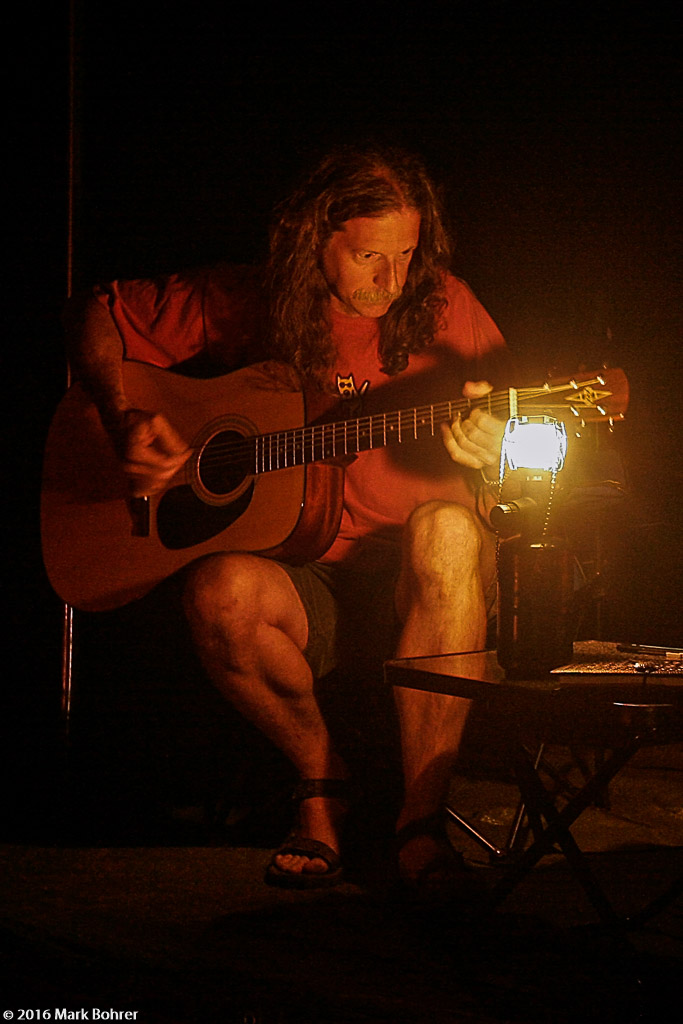 Rick on guitar, Hico, WV Outdoor Rally Former New Mexico governor Gary Johnson spoke at a rally in Santa Fe’s plaza after bicycling 87 miles south from Taos. Afterward, he met local press to answer questions about his Libertarian campaign for the presidency. The plaza’s large gazebo chopped harsh high-angle sun into softer low-angle lighting. There was enough of it in late afternoon that I was able to shoot without any supplemental flash. Again, I waited for Gary to turn slightly toward me and engage in an answer. I went tighter with enough background – American flag, cameras – to tell the story. The French correspondent with the red-ringed lens and Rode mic is shooting closer than I like to go. You either get a very tight headshot, or you get nose distortion from a wideangle used close. 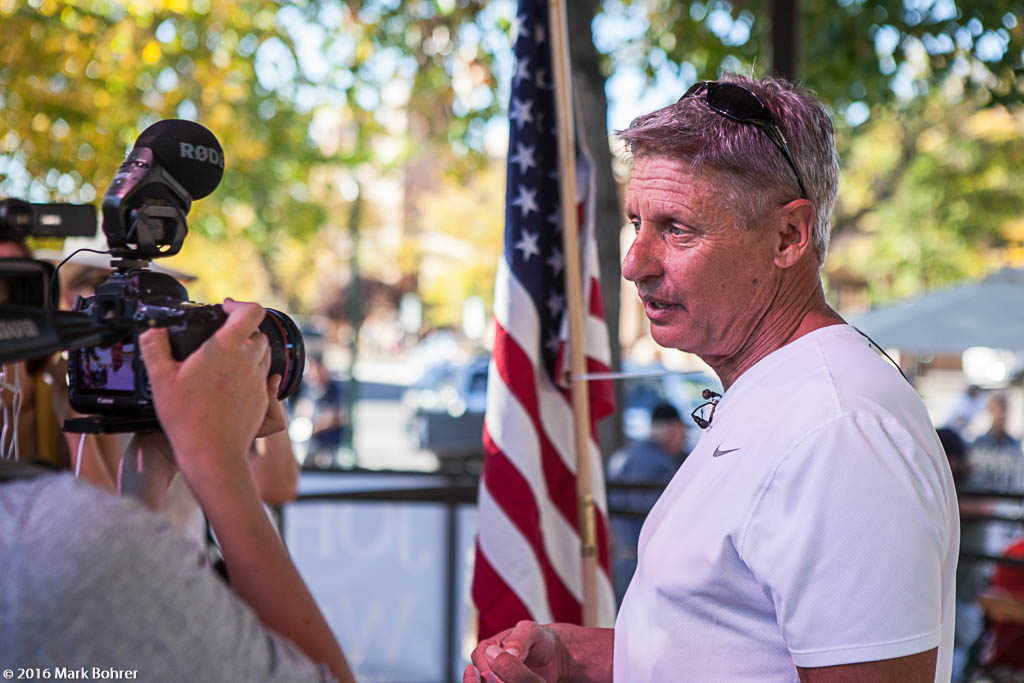 Libertarian presidential candidate Gary Johnson meets the press, Santa Fe Plaza, New Mexico Shot Notes Extreme familiarity with your equipment pays off in shooting speed, but it also pays to be prepared. I always have a flash mounted whenever I shoot an outdoor event. I usually use Canon’s E-TTL in-camera flash metering, with flash set to 2/3 or a full stop below full exposure. Flash fill just a little below ambient gives you more light and freezes the action without screaming, “I scorched this guy’s face!” I can switch the flash off or on in an instant depending on what I need. I set my Canon 430EX or 550EX flash to high-speed sync to make the shutter speed independent of the flash. Diffuse That Flash! When there’s lots of ambient daylight, you may get away with undiffused flash mounted in your camera’s hot shoe. This is what I usually do shooting sports outdoors, especially in the mud where a large reflector is a crud-catcher. But whenever I can, I use a Lumiquest pocket bouncer velcroed to my flash. I can set it up to reflect light from above the camera in either horizontal or vertical shooting with one twist of the flash head. Why above the camera? We’re used to seeing light from above – it looks ‘normal’ that way. With a shoe-mounted flash in a vertical, you get light from the side, and sometimes some strange shadows. In any case, low-angle light gives me the best pictures, usually with lots of reflected ambient from the sun or overhead interior lighting. But it depends on what looks good to you (and your editor) and what you’re shooting. if I have to get the shot RIGHT NOW in a breaking situation, I’ll use whatever I need. I can’t ask the top-seed racer to make his dual slalom run through the mud again. Gear For Fast Changes I have a mirrorless camera with adapted Leica prime lenses. Those lenses are sharp as tacks, and they give their own great look to a picture. But in fast-breaking situations like most outdoor events, I prefer larger dSLRs and constant-aperture f/2.8 AF zooms. My eyes aren’t what they once were, so manual focus eats time. Autofocus frees my attention for things like the background behind a moving subject, choosing a subject’s intense expression, wild action, or flying bicycles and mud in a crash. Zooms let me do a rough frame that’s much closer to the final crop. It’s always better to get it as close to right as possible in the camera. You may also have to consider the white balance (color temperature) from different light sources. Flash simulates the sun’s color right overhead at mid-day. Old incandescent Edison light bulbs are much ‘warmer’ (more yellow) than that. You may need to use a warming gel over your flash to match their color, or the color of ‘warm’ CFL bulbs. Color temperature matching is especially important with old-style fluorescent light like that in most business offices. Without a green gel, everything not lit by your flash will look sickly green. Outdoors, none of this will be a problem. A flash’s color is close enough to normal daylight for most of the day. |
(408) 483-3782
Curious about how to shoot ruins?(408) 483-3782

Recent Comments